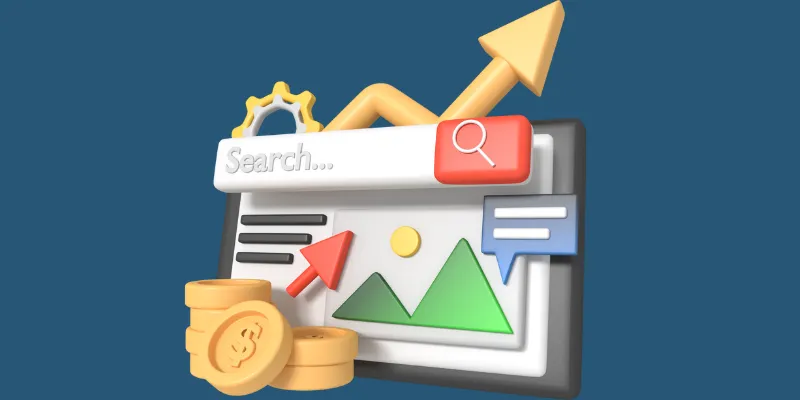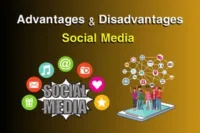Google Organic Search Bot: Complete Guide to Leveraging Search Automation
Published: 6 Jul 2025
In today’s competitive digital landscape, website owners and SEO professionals constantly seek innovative ways to improve their search engine rankings. The concept of a Google organic search bot has emerged as a powerful tool for enhancing online visibility and driving targeted traffic to websites. These sophisticated automation tools simulate real user behaviour to boost organic search performance, making them invaluable assets for modern SEO strategies.
Understanding how these bots work is crucial for anyone serious about achieving SEO success. Unlike traditional marketing methods, organic search bots operate by mimicking authentic user interactions with search engines, creating natural-looking traffic patterns that can positively impact search rankings. This comprehensive guide will explore everything one needs to know about Google organic search bot technology, from basic concepts to advanced implementation strategies.
Readers will discover the technical aspects behind these tools, learn about popular platforms like Dalga and SearchSEO, and understand how to integrate bot traffic with legitimate SEO efforts. The guide also covers essential safety considerations, best practices, and future trends in search automation technology.
What is a Google Organic Search Bot?
A Google organic search bot is an automated software tool designed to simulate human behaviour when conducting searches on Google and other search engines. These bots perform searches for specific keywords, click on targeted websites, and engage with content in ways that mimic real user interactions. The primary purpose is to influence search engine algorithms by creating artificial but realistic traffic patterns.

The core functionality of organic search bots revolves around their ability to replicate authentic user behaviour. They navigate search results pages, click on specific listings, spend time on websites, and even perform secondary actions like scrolling, clicking internal links, or filling out forms. This sophisticated simulation helps websites appear more popular and relevant to search engines.
It’s important to distinguish between organic search bots and Google’s own crawling bots. While Google’s crawlers index web content for search results, organic search bots focus on generating user-like interactions to improve search rankings. Google’s bots read and analyze website content, whereas organic search bots primarily simulate user engagement patterns.
These tools find applications across various SEO scenarios. Website owners use them to boost Google click-through rate for specific keywords, improve rankings for pages stuck on page two of Google, and generate consistent traffic from bots for website engagement. The bots can target specific geographic locations, devices, and user demographics to create highly targeted traffic patterns.
How to Boost Google Rankings with Organic Search Bot Traffic
The relationship between click-through rates and search rankings forms the foundation of how organic search bots can improve website visibility. Google’s algorithm considers user engagement signals, including CTR, as ranking factors. When a website receives more clicks relative to its impressions, it signals to Google that the content is relevant and valuable to users.
A systematic approach to using search bots for ranking improvement begins with keyword research and competitor analysis. Users should identify target keywords where their website ranks between positions 4-20, as these present the best opportunities for improvement. The process involves setting up bot campaigns that gradually increase click-through rates while maintaining natural patterns.
Best practices for natural traffic simulation include varying click patterns throughout the day, using diverse IP addresses, and incorporating realistic user behaviour such as different session durations and bounce rates. The bots should simulate users from various geographic locations and device types to create authentic traffic diversity.

Tracking and monitoring success requires integration with Google Search Console and Google Analytics. These platforms provide essential data on organic search performance, click-through rates, and user engagement metrics. Regular monitoring helps identify which campaigns are delivering results and which need adjustment.
Risk management involves starting with conservative settings and gradually increasing bot activity. Users should avoid sudden spikes in traffic that might trigger algorithm penalties and always maintain a balance between bot traffic and legitimate organic visitors.
Google Organic CTR Tool Features and Benefits
Click-through rate manipulation tools represent a sophisticated category of SEO automation software. These tools focus specifically on improving the ratio of clicks to impressions for targeted keywords and search results. Understanding what is a good ctr for organic search helps users set realistic targets for their campaigns.
Key features that make CTR tools effective include advanced proxy rotation systems, realistic user behaviour simulation, and comprehensive targeting options. Premium tools offer features like mobile and desktop traffic simulation, geographic targeting, and integration with popular SEO platforms. Many tools also provide detailed analytics and reporting capabilities.
The integration of CTR tools with the overall SEO strategy requires careful planning and coordination. These tools work best when combined with quality content creation, technical SEO optimisation, and legitimate link-building efforts. Users should view CTR manipulation as one component of a comprehensive SEO approach rather than a standalone solution.

When comparing different CTR tool options, important factors include pricing structure, available features, customer support quality, and user interface design. Some tools offer Google organic search bot free versions with limited functionality, while premium options provide advanced features and higher traffic volumes.
ROI considerations involve calculating the cost-per-click improvement and measuring the resulting increase in organic traffic and conversions. Users should track metrics like average position improvements, organic traffic growth, and ultimately, revenue or lead generation increases.
Google Organic Search Traffic Bot – Dalga Platform Review
Dalga represents one of the leading platforms in the organic search bot industry, offering comprehensive solutions for automated traffic generation. The platform specializes in creating highly realistic user interactions that can effectively improve search engine rankings without triggering detection algorithms.
The platform’s unique features include advanced browser fingerprinting technology, extensive proxy networks, and sophisticated behaviour simulation capabilities. Dalga’s bots can perform complex actions like scrolling, clicking multiple pages, and even simulating typing behaviour to create authentic user sessions.
Dalga’s pricing structure typically follows a tiered model based on the number of searches or clicks per month. The platform offers different packages to accommodate various budget levels and campaign requirements. Users can often start with smaller packages and scale up as their needs grow.
The user interface emphasizes simplicity and functionality, allowing users to set up campaigns quickly without extensive technical knowledge. The dashboard provides real-time monitoring of campaign performance and detailed analytics on traffic patterns and engagement metrics.
Performance benchmarks show that Dalga can effectively improve rankings for targeted keywords when used consistently over time. Case studies often demonstrate ranking improvements of 3-10 positions for moderately competitive keywords within 30-60 days of campaign implementation.
Understanding How Google’s Organic Search Bot Technology Works
The technical architecture behind search bot operations involves several sophisticated components working together to create realistic user interactions. At the core, these systems use headless browsers or browser automation frameworks to simulate real web browsing behaviour.
Proxy networks and IP rotation mechanisms ensure that bot traffic appears to originate from diverse geographic locations and internet service providers. Advanced systems use residential proxies that are virtually indistinguishable from real user connections, reducing the risk of detection by search engines.
Browser fingerprinting and detection avoidance represent critical aspects of modern search bot technology. These systems modify various browser characteristics like user agent strings, screen resolutions, installed plugins, and other identifying features to create unique digital fingerprints for each session.
Geographic targeting and location simulation allow bots to generate traffic from specific regions, cities, or countries. This capability is particularly valuable for businesses targeting local markets or testing international SEO strategies.
Session management and realistic user patterns involve creating believable user journeys that include appropriate delays between actions, varied session durations, and natural browsing patterns. Advanced bots can even simulate users who visit multiple pages, spend time reading content, and return to the website at later times.
SearchSEO CTR Traffic Bots for Organic SEO Growth
SearchSEO offers another prominent platform for organic search bot services, focusing on providing scalable solutions for businesses and SEO agencies. The platform emphasizes automation and integration capabilities that streamline campaign management and performance tracking.
The platform’s integration capabilities with existing SEO tools make it particularly attractive for professionals already using comprehensive SEO software suites. SearchSEO can often connect with popular tools for keyword tracking, rank monitoring, and analytics reporting.
Automation features include scheduled campaigns, automatic keyword targeting based on current rankings, and intelligent traffic distribution throughout the day. These features reduce the manual work required to maintain effective bot campaigns while ensuring consistent performance.
The reporting and analytics dashboard provides detailed insights into campaign performance, including click-through rate improvements, ranking changes, and traffic pattern analysis. Users can track the effectiveness of their campaigns and make data-driven decisions about optimization strategies.
Customer support and training resources help users maximize the platform’s potential. Many providers offer detailed documentation, video tutorials, and direct customer support to help users implement successful campaigns and troubleshoot any issues.
Advanced Google Organic Search Bot Strategies
Multi-keyword targeting approaches involve creating comprehensive campaigns that target multiple related keywords simultaneously. This strategy can be particularly effective for websites with broad topic coverage or businesses serving multiple market segments.
Long-tail keyword optimization with bots focuses on improving rankings for specific, less competitive keyword phrases. These campaigns often provide better ROI because long-tail keywords typically have higher conversion rates and face less competition from other websites.
Competitive analysis and market positioning involve using bots to test and improve rankings relative to competitors. Users can analyze competitor performance and develop strategies to capture market share in specific search result segments.
Seasonal campaign planning and execution allow businesses to capitalize on periodic search trends and shopping seasons. Bots can be programmed to increase activity during peak periods when search volume naturally increases.
Advanced targeting and demographic simulation enable highly specific traffic generation that matches ideal customer profiles. This approach can improve not only rankings but also the quality of traffic and potential conversion rates.
Generate Unlimited Organic Traffic Bot Solutions
Scalability considerations for high-volume campaigns involve understanding the infrastructure requirements and technical limitations of different bot platforms. Large-scale operations require robust proxy networks, efficient resource management, and careful monitoring to maintain effectiveness.
Resource management and infrastructure requirements include adequate server capacity, reliable internet connections, and sufficient proxy resources to handle increased traffic volumes. Users planning large campaigns should consider these technical requirements early in the planning process.
Cost-effective scaling strategies involve optimizing campaigns for efficiency and ROI rather than simply increasing volume. This might include focusing on high-value keywords, improving targeting precision, or negotiating better rates with service providers.
Performance optimization techniques include A/B testing different bot configurations, optimizing traffic patterns for maximum impact, and continuously refining targeting parameters based on performance data.
Monitoring and maintenance best practices ensure that large-scale campaigns continue operating effectively over time. This includes regular performance reviews, technical maintenance, and adaptation to changes in search engine algorithms.
Google Organic Search Bot – The Virtual User Experience
Simulating authentic user behaviour patterns requires understanding how real users interact with search engines and websites. This includes realistic search patterns, natural clicking behaviour, and appropriate engagement metrics that align with genuine user expectations.
Session duration and engagement metrics play crucial roles in creating believable user interactions. Bots should simulate users who spend appropriate amounts of time on pages, interact with content, and display engagement patterns consistent with the website’s typical audience.
Bounce rate optimization strategies involve programming bots to behave like engaged users rather than visitors who immediately leave the website. This might include clicking internal links, scrolling through content, or spending adequate time on landing pages.
Mobile versus desktop traffic simulation reflects the importance of device diversity in modern search behaviour. Effective campaigns should include both mobile and desktop traffic to create realistic traffic patterns that match current user behaviour trends.
User journey mapping and conversion optimisation involve creating complex user paths that simulate real customer behaviour. This might include multiple page visits, form submissions, or other conversion actions that signal genuine user engagement.
Google Search Scraper Integration and Data Extraction
Combining search bots with data scraping tools creates powerful systems for comprehensive SEO analysis and competitive intelligence. These integrated approaches can provide valuable insights into market trends, competitor strategies, and ranking opportunities.
Competitor analysis and market research applications involve using scraped data to identify successful strategies and opportunities for improvement. This information can inform bot campaigns and overall SEO strategy development.
SERP monitoring and ranking tracking provide essential feedback on campaign effectiveness. Integration with Google Trends data can help identify optimal timing for campaign launches and adjustments.
Automated reporting and data visualisation transform raw performance data into actionable insights. These systems can generate regular reports on ranking improvements, traffic changes, and campaign ROI.
Compliance and ethical considerations ensure that data collection and bot activities remain within acceptable bounds. Users should understand relevant terms of service and implement appropriate safeguards to protect their websites and accounts.
Best Practices and Safety Guidelines
White-hat versus black-hat approaches to search bot usage represent a fundamental choice that affects long-term success and risk levels. While aggressive tactics might provide faster results, conservative approaches typically offer better long-term sustainability and lower risk of penalties.
Understanding Google’s Terms of Service and potential penalties helps users make informed decisions about their SEO strategies. Search engines continuously update their detection methods and penalty systems, making it essential to stay current with policy changes.
Risk mitigation strategies include starting with conservative settings, gradually increasing activity levels, and maintaining detailed records of all campaign activities. Users should also maintain backup strategies in case primary campaigns need to be suspended.
Building sustainable, long-term SEO strategies involves integrating bot traffic with legitimate SEO efforts like content creation, technical optimization, and natural link building. The most successful approaches treat bots as one component of comprehensive SEO programs.
Combining bot traffic with legitimate SEO efforts creates synergistic effects that can improve overall website performance. Quality content, technical optimization, and natural user engagement work together with bot traffic to create strong ranking signals.
Conclusion
The world of Google organic search bot technology offers powerful opportunities for improving search engine rankings and driving targeted traffic to websites. These sophisticated tools can effectively simulate real user behaviour, boost click-through rates, and create positive ranking signals when used properly.
Success with organic search bots requires understanding their capabilities and limitations, implementing appropriate safety measures, and integrating them with comprehensive SEO strategies. The most effective approaches combine bot traffic with quality content creation, technical optimization, and legitimate user engagement efforts.
As search engines continue evolving their algorithms and detection methods, the future of organic search bot technology will likely involve even more sophisticated simulation capabilities and better integration with overall digital marketing strategies. Users who stay informed about these developments and adapt their approaches accordingly will be best positioned for long-term success.
The key to successful implementation lies in balancing automation with authentic SEO practices, maintaining realistic expectations, and continuously monitoring and adjusting campaigns based on performance data. With proper implementation and ongoing optimization, organic search bots can become valuable assets in achieving sustainable SEO success.

- Be Respectful
- Stay Relevant
- Stay Positive
- True Feedback
- Encourage Discussion
- Avoid Spamming
- No Fake News
- Don't Copy-Paste
- No Personal Attacks

- Be Respectful
- Stay Relevant
- Stay Positive
- True Feedback
- Encourage Discussion
- Avoid Spamming
- No Fake News
- Don't Copy-Paste
- No Personal Attacks





